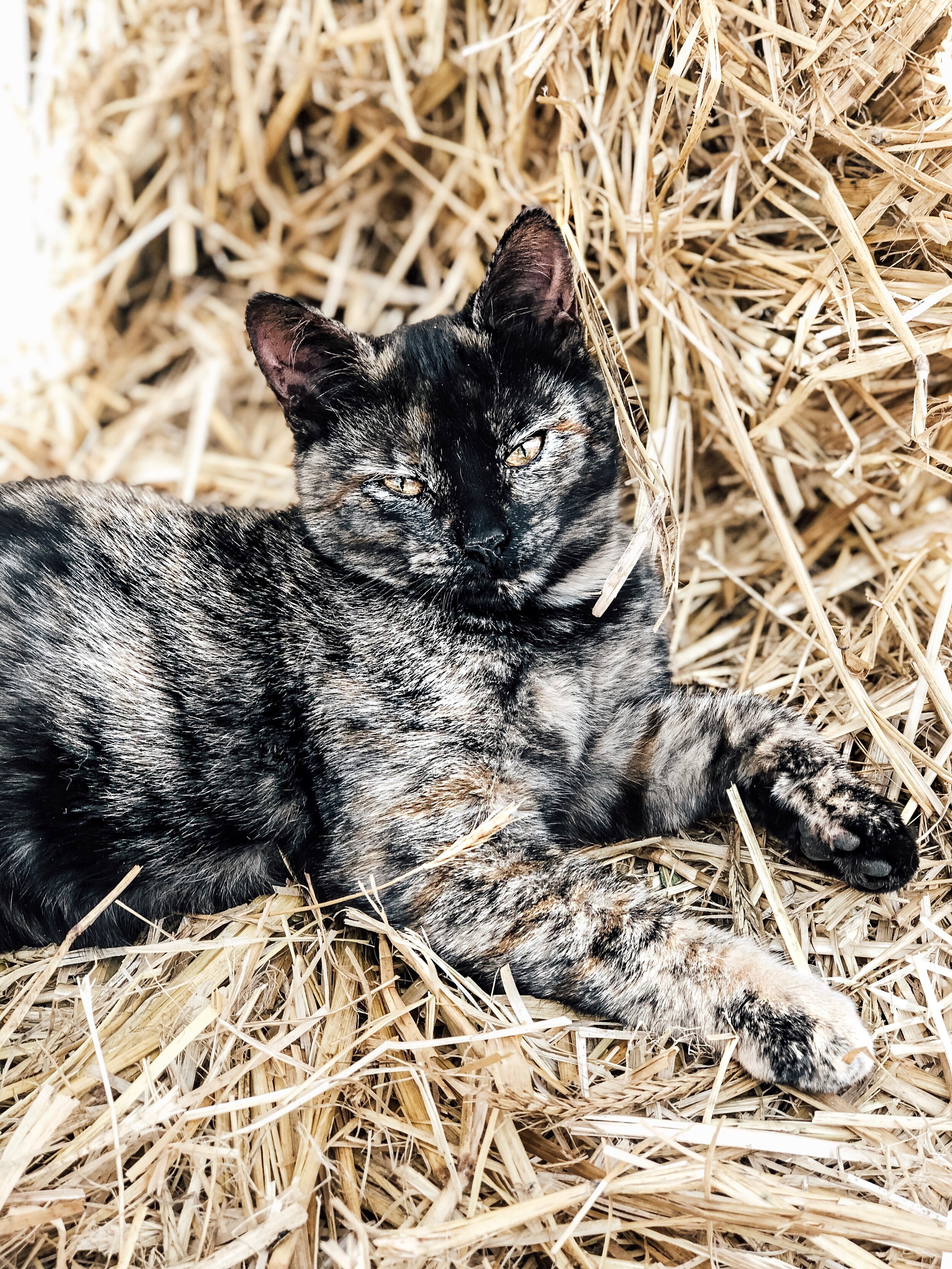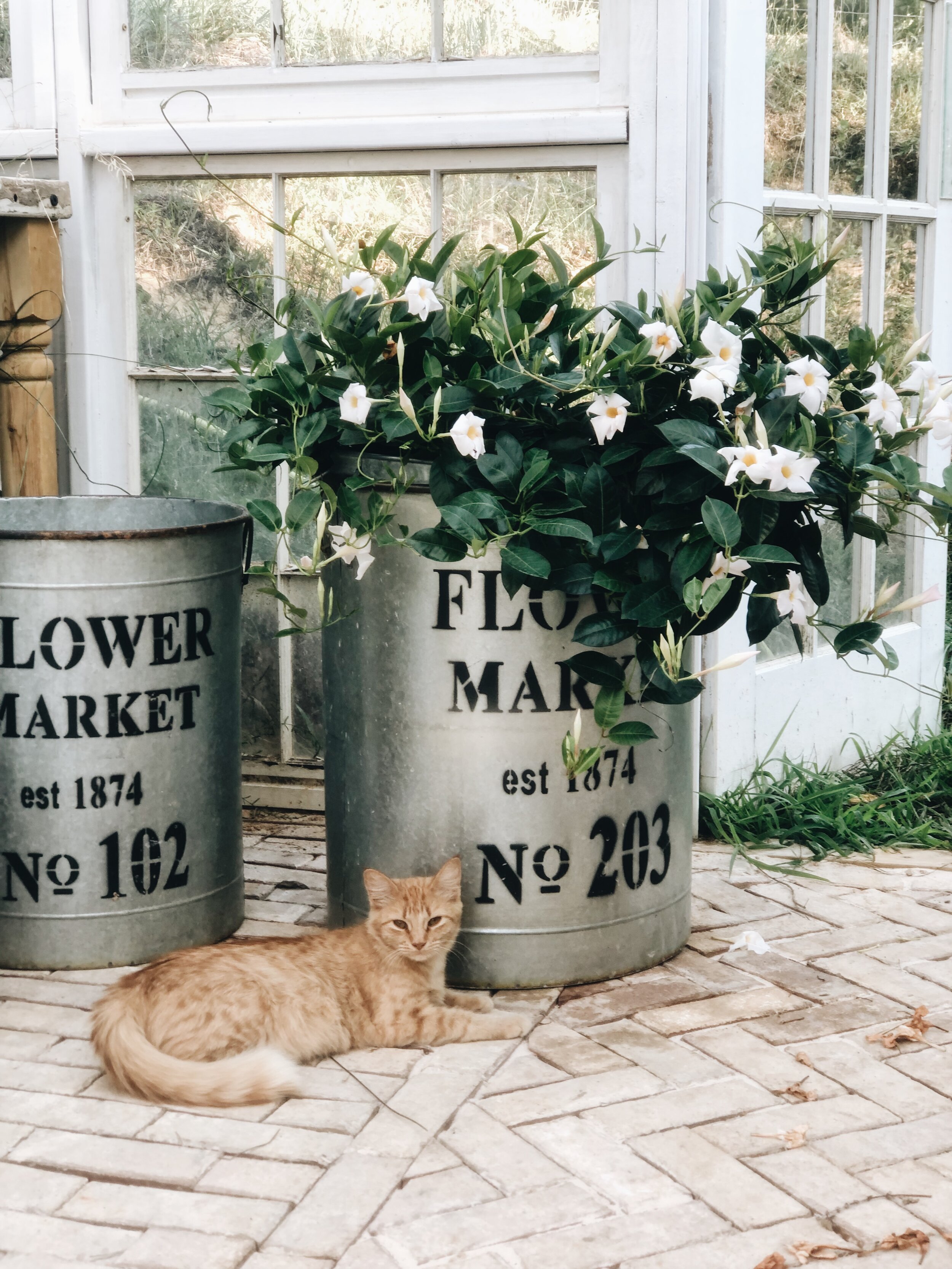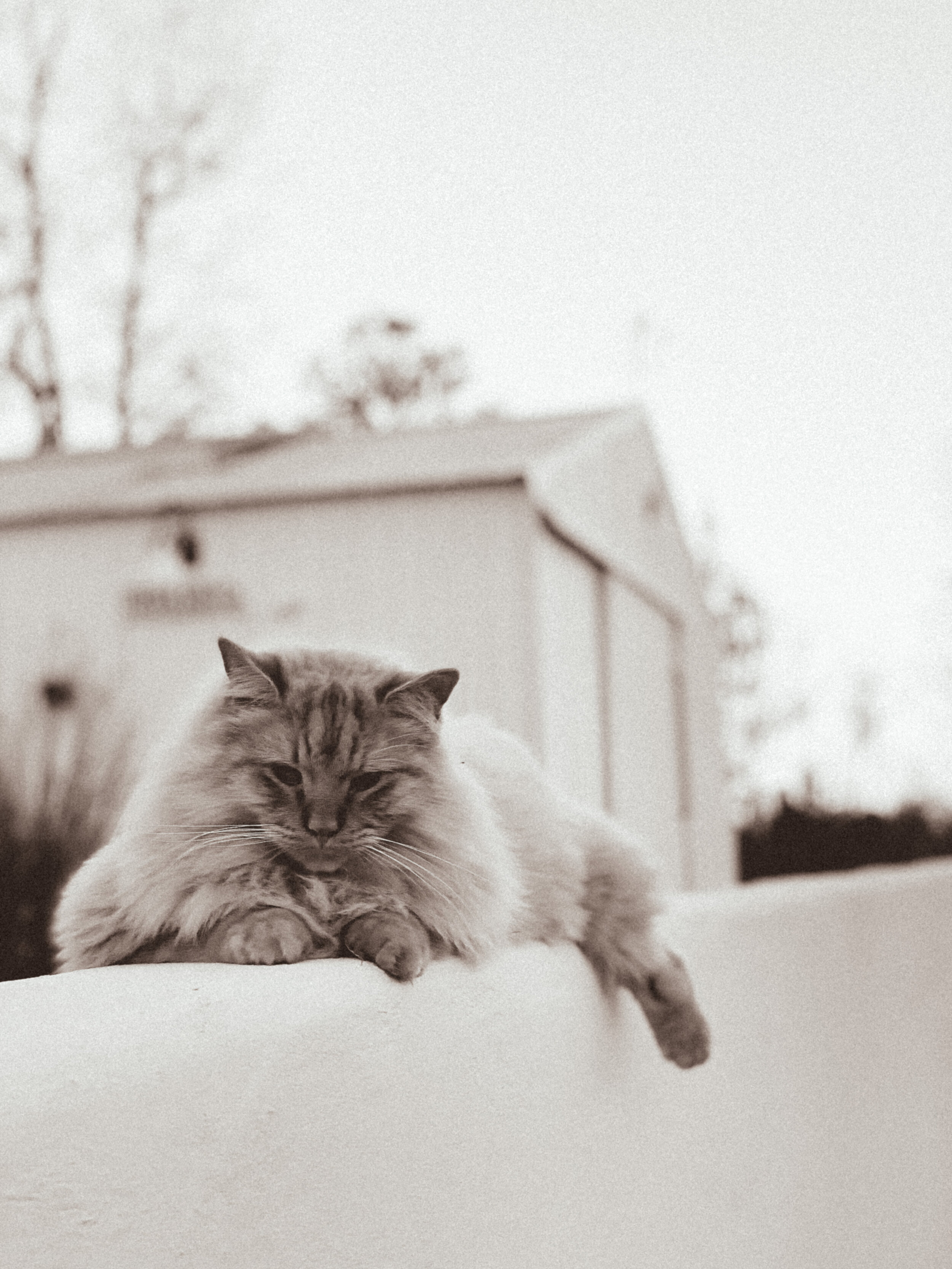How to Raise Barn Cats
One of our favorite animals on the farm (like all our animals!) has been our barn cats.
With their relaxed attitudes and sleeping like there is a tomorrow, they sure are a different kind of entertainment!
Always staring through the window, waiting in anticipation for their next meal, napping on our car’s roof, or curled up in a pot, squashing my beautiful flowers!
They kind of own the place around here! What can I say?!
Nevertheless, they are an excellent addition to our farm. Read on to see why you should have barn cats and how to accommodate them on your farm.
In this post, I will cover:
WHAT IS A BARN CAT?
A barn cat, also often known as a farm cat, is usually a mixed-breed cat that lives primarily outdoors. They are more untamed than housecats!
It might be feral or somewhat feral (a feral cat is an unowned domestic cat that lives outdoors and avoids human contact; It does not want to be handled or touched).
The barn cat will usually live on an agricultural type of land/property such as a farm. Its main purpose is to keep a barn or outdoor area pest-free.
WHY YOU SHOULD HAVE BARN CATS
Barn cats are essential to farm life. They keep your barn and yard rodent-free and tidy, and there are fewer pests when cats are around. They are very effective in keeping rodents and other critters away.
Not only are they rodent chasers, but cats are special and fun animals, too! I adore our cats, and that’s no secret!
They are friendly and make great companions around the farm. But even if you’re not a huge fan, an outdoor cat can be pretty easy to keep and bring you many benefits.
We currently have 6! Yes, that’s a lot, but I can’t help myself! Georgia, Oscar, Sunny, Frank, Oscar Jnr, and Bob. We also have one house cat, Havanna. All of them are adorable and so fun in their own way!
Sunny is our dear little Feral and will not let us touch her or really get near. The others are semi-sociable ;-)
This is Sunny!
WHERE DO YOU FIND A BARN CAT?
The unfortunate truth is that there is never a shortage of cats that need a home. Whether they come from a shelter, litter, or someone giving away a cat, they are in abundance!
There will always be cats that need homes. Just because they’re barn cats, all wild and free, doesn’t mean they can’t have a wonderful home and a safe place to live happily.
Your local feed store, pet shop, or animal shelter will probably have some cats up for adoption or leads. Craigslist is also another platform where you can search!
I have discovered, however, that getting a barn cat as a kitten is always easier and better. It also makes it easier to train them. They will learn where home is and will integrate better with the rest of your farm animals.
If you get an older cat from a shelter, ensure it has been used to living outdoors. A cat used to living indoors (a home cat) would not adjust well to being outside and vice versa, so keep this in mind when choosing.
It’s also best to adopt or get cats in pairs, as they need the companionship of their own kind to be happy.
WHAT TO DO WHEN YOU BRING THEM HOME
Cats tend to be free-spirited and wander away from home. Always exploring and hunting for their next meal or partner. There are a few things I suggest you do when you bring your cat home to ensure they always stay close or come back:
Have a large crate set up in your barn or shelter that you want them to claim as home.
Keep them in this large crate for about 10–14 days ( if possible) with plenty of food and water, plus a litter box.
After two weeks or so, open the crate so they can roam around. Keep feeding them and providing water. You may choose to move the litter box out of the crate but keep it nearby.
After a few days of roaming freely, move their food, water, and litter box out of the crate ( if you haven’t already).
For two more weeks, keep the crate available and open. The cat may choose to sleep there or keep coming back to it as their safe place. Once it has been a few weeks, you may remove the crate altogether. By now, the cat should be used to their new home and happily roam about but still come back.
Always keep feeding your cat and providing water (unless there is a water source nearby). This will keep them coming back for more.
And if you want, while they are in the cage for the first two weeks, talk to them like a strange cat lady! They will get used to your voice, and it could calm them.
When we got Oscar and Georgia, they were about 10 weeks old, and this is exactly what we did. It worked out perfectly, and they have been the best barn cats.
Once you move the cat litter, you can choose to remove it altogether or leave it. We removed it. They use the bathroom outside around the farm, and it’s never been an issue. And no more poop scooping for me! Yay!
MALE OR FEMALE BARN CAT?
I have both, and in my opinion, the female cats are WAY better hunters than the males. I also did a little research, and this tends to be the norm. The boys are sweeter and tend to sleep a lot, lol. Remember my crushed pot plants?
Calico and tortoiseshell females ( of which I have both) tend to be the best hunters. That is definitely true for our little Georgia. The orange tabby cats tend to be males and are very sweet and affectionate, like our dear Oscar.
I always recommend that cats be spayed or neutered. This will reduce fighting, marking, and straying away from home. If a male is not neutered, he might tend to run away to find a mate somewhere else.
A female cat that is not spayed will also stray or attract other males to your farm.
Oscar ( left ) and Sunny ( right)
FOOD AND SHELTER
FOOD
There is a misconception that cats won’t hunt if they are fed. Not true. They will most definitely still hunt. And if they know you provide them with food, they will always stay near and be great workers on your farm.
Another misconception is that cats will get all their nutritional needs from whatever they catch. Once again, not true. They still need additional high-quality protein-rich feed that provides good nutrition to stay strong and healthy and have the energy to do their job.
Do not leave food out all the time, as it will attract Racoons and unwanted animals. Instead, feed them at specific meal times and in a safe place where other animals won’t bother them. You could also place automatic cat feeders to cut back on the work, and it will help when a cat is very cautious of humans.
Freshwater is essential. Always have it available, especially when it’s super hot and humid outside. In frigid regions, remember to check if their water is not frozen and provide them with lukewarm water during winter.
SHELTER
A cat must have a safe place to call home. Their shelter is usually the barn or outside shed, where they will find many cozy places and call it home. Just make sure they have a safe place where they’ll sleep.
During winter, you can provide extra warmth with blankets or even extra hay bales where they can have a nice snuggle.
I do not close our barn at night. Our cats can come and go as they please. It’s not necessary to lock them up at night as long as they have a place to hide and stay dry.
Once you have trained them that the barn is their home, they will tend to stay near.
Another tip: barns or sheds are often places where we store things. So be sure to store toxic substances, pesticides, and other animal food and medication, in a secure cabinet or a place where your cats cannot get to them.
MEDICAL CARE
A barn cat, especially if feral, might not be easy to give medical care to, depending on how much it can be handled.
However, there are some things you can still do to care for them and their health:
Give them food and water to ensure healthy weight, etc.
You can de-worm them by adding dewormer to their food. I get a powder from my vet, which I sprinkle onto a can of wet food, and it works great.
This is harder with fleas and ticks, especially if you can’t handle them. If they let you hold them, you can use natural flea and tick medicine or one your vet suggests. DO NOT use a flea collar, as they can get stuck and injure themselves.
Like any other pet, they also need certain vaccinations. At the very least, they need a vaccination against rabies to protect yourself, them, and other animals. You can also vaccinate against feline leukemia, tetanus, and distemper.
Always spay and neuter. You can go to your local shelter and buy a certificate stating you have a barn cat or feral cat, and they will do it for cheaper than usual. If they give you the option to microchip them, that’s a great way to locate them if they go missing.
Get to know your cat’s habits. Be on the lookout for any abnormal behavior or routines. If they are usually around in the morning and are not anymore, or show up later acting differently, take note. Be observant. You’ll be able to tell if something is wrong.
Georgia is the sweetest kitty ever! Follows me around like a puppy
HOW TO INTEGRATE barn cats WITH OTHER ANIMALS
It’s fun and exciting to bring home a new friend and suddenly realize that you have other pets that will have to get used to the latest family member.
At times, this introduction and integration might prove to be a bit difficult. There are a few things you can do to integrate them and ensure there is some peace ( for the most part) between your animals:
Get a kitten. It is much easier if you can train them from a young age. Farm life with all the animals won’t seem so intimidating to a kitty when it has grown up around them.
When you first get the kitten, move it around in its crate during the day to “see” all the animals. I was apprehensive about my donkeys being aggressive around the kittens. I made sure to “introduce” them multiple times so they would be used to each other. I did the same with the chickens.
Cats can learn quickly not to go after chickens. If they grow up together, they can be friends and not bother one another. In fact, I’ve had my chickens chase the cats away. They can all manage pretty well.
how to keep barn cats out of your garden
If you want barn cats but also love your garden beds, these tips may help to keep them out:
Don’t leave open boxes with just dirt inside. Cats will use them as their litter boxes.
Use mulch like straw, leaves, etc., which will hinder the cats from scratching and lying on your plants.
You can add chicken wire or cloches over your seeds until they have sprouted. Once sprouted, add mulch.
Plant lavender in your beds. Cats are not keen on the scent and will most likely stay away. We have lavender planted at the ends of our beds.
Have a sandbox nearby to give them a place where they can dig and do their thing.
Friend, I hope you found this blog post on how to raise barn cats informative and that you are now more equipped to raising healthy happy barn cats!
Annette xxx
PIN FOR LATER
I hope this has been helpful to you as you look for a barn cat! My last recommendation would be that 2 is better than 1. I feel like they can have a friend and they are safer that way! But be careful, it’s hard to have just 1 or 2.
If you have questions please don’t hesitate to reach out! If you need other resources check out my posts on
Much Love,
Annette












